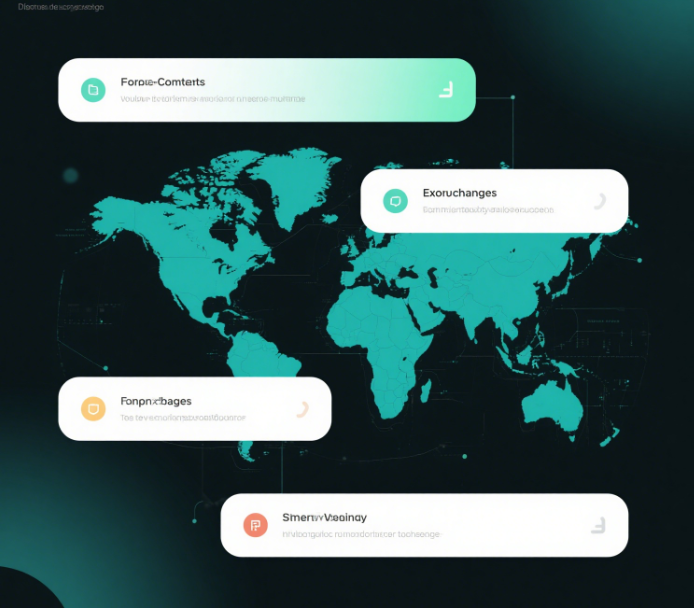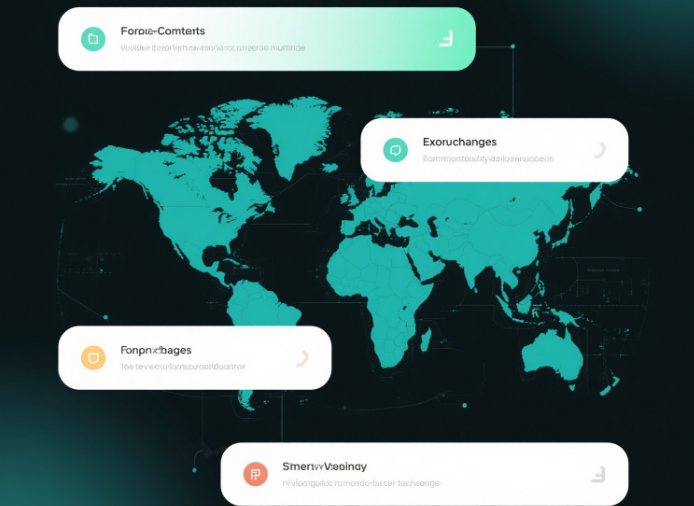In the rapidly evolving cryptocurrency landscape, decentralized exchanges (DEXs) have emerged as a game-changer, offering users unprecedented control over their assets and a vision of financial freedom. Unlike centralized exchanges (CEXs), which rely on intermediaries, DEXs operate on blockchain technology, enabling peer-to-peer trading without third-party interference. This article explores the core mechanics, advantages, challenges, and future trends of DEXs, providing actionable insights for traders, investors, and industry enthusiasts.
Understanding Decentralized Exchanges: The Backbone of DeFi
Decentralized exchanges are decentralized platforms that facilitate crypto trading directly between users through smart contracts. Unlike CEXs, which require users to deposit funds into a centralized wallet, DEXs allow traders to retain full custody of their assets. This non-custodial model eliminates the risk of hacks, scams, or mismanagement—a critical flaw exposed by high-profile CEX failures like FTX in 2022 .
Key Features of DEXs:
- Automated Market Makers (AMMs): Most DEXs use AMMs, such as Uniswap’s liquidity pools, to facilitate trades. Users provide liquidity to pools and earn fees in return, creating a decentralized liquidity ecosystem .
- Smart Contract Security: Transactions are executed via self-executing smart contracts, reducing counterparty risk and ensuring transparency.
- Cross-Chain Functionality: Modern DEXs like Rango and XSwap support cross-chain trading, enabling users to swap assets across multiple blockchains .
Why DEXs Are Outpacing Centralized Exchanges in 2025
While CEXs still dominate in terms of liquidity and user-friendliness, DEXs are gaining traction for several reasons:
1. Security and Decentralization
DEXs eliminate the need to trust a central authority. Users control their private keys, and transactions are recorded on a public blockchain, making them immutable and transparent. In contrast, CEXs are vulnerable to hacks and regulatory crackdowns, as seen with Binance’s 2023 legal battles .
2. Privacy and Censorship Resistance
DEXs do not require KYC (Know Your Customer) checks, allowing users to trade anonymously. This is particularly appealing in regions with strict crypto regulations, where CEXs may be forced to restrict access .
3. Innovation in DeFi
DEXs are at the forefront of DeFi innovation, supporting yield farming, staking, and decentralized lending. Projects like Ethervista combine AMMs with token launchpad features, creating new revenue streams for liquidity providers .
4. Lower Fees
DEXs typically charge lower fees than CEXs, as they lack centralized infrastructure costs. For example, Uniswap’s fees range from 0.1% to 1%, compared to CEXs like Coinbase, which charge up to 4% for credit card purchases .
The Technical Architecture of DEXs: How They Work
1. Automated Market Makers (AMMs)
AMMs use liquidity pools and algorithms to determine asset prices. When users trade, they interact with these pools rather than an order book. For instance, in a Uniswap pool, the price of an asset is determined by the ratio of tokens in the pool. Liquidity providers (LPs) earn fees proportional to their contribution .
2. Cross-Chain Bridges
To enable trading across blockchains, DEXs like THORSwap and Zenlink use cross-chain bridges. These bridges lock assets on one chain and mint equivalent tokens on another, allowing seamless swaps .
3. Layer 2 Scaling Solutions
To address Ethereum’s scalability issues, DEXs are adopting Layer 2 (L2) solutions like Optimism and zkSync. These networks process transactions off-chain, reducing gas fees and improving speed. Uniswap’s upcoming L2 solution, Unichain, aims to enhance scalability further .

Top DEXs in 2025: Leading the Charge
1. Uniswap
As the largest DEX by volume, Uniswap revolutionized DeFi with its AMM model. Its upcoming v4 upgrade, launching in 2025, will introduce “hooks” for custom smart contract logic, enabling features like limit orders and dynamic fees .
2. SushiSwap
A fork of Uniswap, SushiSwap differentiates itself with governance tokens (SUSHI) and yield farming incentives. Its Multichain Router supports cross-chain swaps, expanding its user base .
3. EDX
Backed by Wall Street giants like Fidelity and Schwab, EDX is a non-custodial DEX focused on institutional-grade security. It uses third-party to safeguard assets, appealing to risk-averse investors .
4. Rango
A cross-chain DEX aggregator, Rango integrates multiple bridges and DEXs to provide users with the best swap rates. Its recent funding round led by Binance Labs highlights its potential in the multichain ecosystem .
Challenges Facing DEXs and How They’re Being Addressed
1. Liquidity Fragmentation
DEXs often suffer from low liquidity compared to CEXs, leading to price slippage. Solutions like omnichain DeFi platforms aim to aggregate liquidity from multiple chains, providing users with deeper pools and better rates .
2. User Experience
DEXs are notoriously complex for beginners. Projects like Ethervista are improving UI/UX with intuitive dashboards and simplified liquidity management tools .
3. Security Risks
Smart contract vulnerabilities remain a concern. Uniswap’s $15.5 million bug bounty program for its v4 upgrade underscores the industry’s focus on security .
4. Regulatory Uncertainty
As governments worldwide grapple with crypto regulations, DEXs must balance decentralization with compliance. Hybrid models that combine CEX liquidity with DEX security may emerge as a solution .
The Future of DEXs: Trends Shaping 2025 and Beyond
1. Institutional Adoption
Institutions are increasingly embracing DEXs for their transparency and security. EDX’s institutional backing and projects like zkLink’s zero-knowledge proofs are paving the way for institutional-grade DeFi .
2. AI and Automation
AI-powered tools are enhancing DEX trading strategies. For example, AI agents can automatically execute trades based on market conditions, reducing human error and improving efficiency .
3. Cross-Chain Interoperability
Projects like THORSwap and Zenlink are enabling seamless asset transfers across blockchains, creating a unified DeFi ecosystem .
4. Layer 2 Scaling
L2 solutions like Optimism and zkSync are becoming mainstream, addressing Ethereum’s scalability issues and making DEXs more accessible to retail users .
Conclusion: The DEX Revolution Is Here
Decentralized exchanges are no longer a niche alternative—they’re the future of crypto trading. With advancements in security, scalability, and user experience, DEXs are poised to disrupt traditional finance and empower users worldwide. Stay ahead of the curve by exploring top DEXs like Uniswap, SushiSwap, and EDX, and leverage tools like Bitora to stay updated on the latest trends and analysis.
Stay informed with Bitora’s cutting-edge insights into decentralized exchanges and DeFi innovation. Visit Bitora to unlock the future of crypto trading.









Leave A Reply